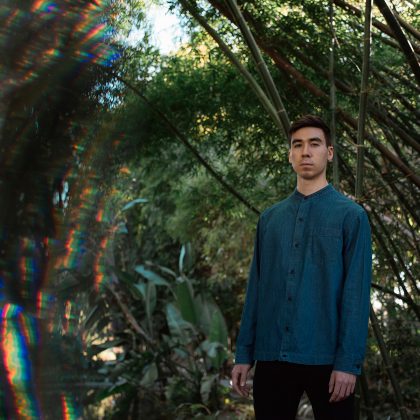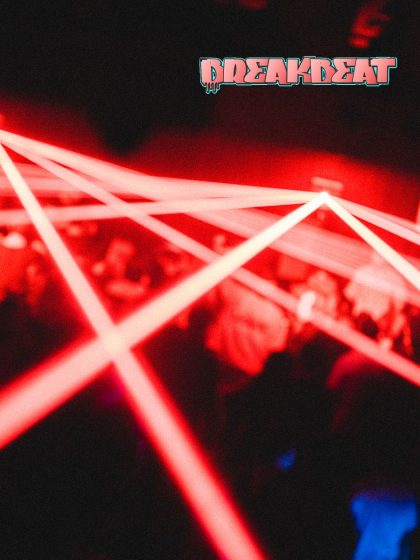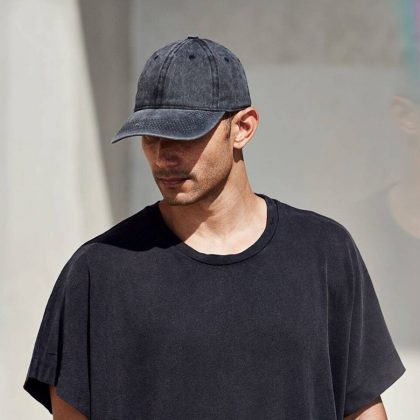How to Talk to Your Kids About Progressive House
We are not the biggest fans of genre tags; they feel very limiting. If the music comes from an honest place and has a uniqueness to it that makes you feel something, it’s likely we’ll find a way to play it. This is what attracted us to progressive house from the start, and what’s kept us coming back for more. However, as people who have followed the genre since the early days, we’re currently having a hard time finding the music we like. Turns out we were just looking in the wrong places.

If you go to an event and mention progressive house, chances are you will get a host of answers as to what music comprises it. If you’re in your teens or early 20s, it likely means “big room.” Late 20s? It could imply Steve Angello, Kaskade, Avicii or deadmau5. Older dance music fans would say Sasha & Digweed, Hybrid, Quivver and Deep Dish.
From the beginning, “progressive” meant just that—a dance song that develops in stages, proceeding step by step while adding and subtracting layers. A typical progressive house song also has an emphasis on strong percussion, as well as intricate melodies and harmonies. There are also a lot of delay effects and copious amounts of reverb, which is what gives a progressive house record its spaciousness.
EARLY PROGRESSIVE HISTORY

The genre unofficially began in October 1990 with the release of Leftfield’s classic “Not Forgotten.” “It wasn’t garage; it wasn’t techno; it wasn’t piano house. It was underground electronic house,” says Dave Seaman, a longtime fixture in the scene, who has provided progressive house with many watershed moments through his A&R, DJing, journalism and producing efforts. Before “Not Forgotten,” England was primarily a consumer of dance music, as most of the tunes were imported from the US, Germany, Holland and Belgium. This track opened up a lot of doors for British producers because it gave them the belief that they could have a distinctly British sound to call their own.
Fast-forward a couple of years, and there were already a handful of artists (Underworld, Soma, Spooky, Gat Decor, Brothers in Rhythm, William Orbit) and indie labels (Guerilla, Hooj Choons, Deconstruction, Soma Quality Recordings, Boys Own, Cowboy, 23rd Precinct and Stress) offering up music based on the Leftfield blueprint. William Orbit—whom you might know from producing Madonna or making ambient albums—played a huge role in the formation of the progressive house sound through his Guerilla label.
“For me, Guerilla Records played a huge part in [progressive house] developing into a scene,” says Seaman. “They really started to fly the flag for this music with artists like React 2 Rhythm, Spooky and Dr. Atomic.”
All this excitement and innovation, yet the music didn’t have a name. That would soon change when Mixmag UK scribe Dom Phillips stepped into a rave and heard a continuous set of this music for the first time.
“Things are changing,” wrote Phillips in the Mixmag article “Trance Mission 1992.” “There’s a new breed of hard but tuneful, banging but thoughtful, uplifting and trance-y British house that, while most at home with the trendier Balearic crowd, is just as capable of entrancing up a rave crowd. Progressive house we’ll call it. It’s simple, it’s funky, it’s driving, and it could only be British.”
From the moment these words were written, dance music around the world changed in a big way. Mixmag played a pivotal role in bringing this music to the global stage. Not only did they help coin the term and write about the records, DJs and clubs, but the company that owned Mixmag—the Disco Mix Club, or “DMC”—went so far as to start up their own label, Stress, which was where future progressive house stars like Danny Tenaglia and Groove Armada’s Andy Cato got their feet wet. Seaman was the head of A&R.
“It was a breeding ground for talent,” he says. “We gave a lot of big-name DJs and producers their first opportunities.”
PROGRESSIVE HOUSE GROWS

The North of England was abuzz with this newly coined dance music genre. One of its early star DJs was Alexander Coe—or more simply, Sasha. He got his start playing acid house at legendary Manchester club The Hacienda, but it was Shelly’s in Stoke-on-Trent that made him a national star. By then, he was playing all the progressive house anthems and mixing them up with piano-driven Italian house. It was the perfect combination of sounds to go with Shelley’s heavy party scene. When Sasha moved over to Renaissance and met a young John Digweed, that was the moment that forged one of the most influential duos dance music has ever seen—one that was very influential on us as both DJs and producers of dance music.
Once under the same club’s roof, Sasha and Digweed started playing back-to-back sets and experimenting, pushing each other to hone their sound. It turned out to be an unbelievable yin and yang when they released the three-CD Renaissance: The Mix Collection in 1994. This compilation is viewed among progressive house fans almost like it was the Bible. Rave reviews in all the DJ magazines had people talking around the world.
CD compilations were integral to the growth and nurturing of progressive house. In 1996, Sasha and Diggers released their next opus, Northern Exposure. They wanted to document for the world what was happening in the clubs of Northern England. Northern Exposure established the blueprint for a DJ-mixed journey and gave Global Underground’s Andy Horsfield an idea: Take some of the most popular and innovative progressive house DJs, pick an exotic locale, throw a party, and release a two-CD compilation. Before long, this concept would become its own main-stage attraction.
But it wasn’t just compilation CDs propelling progressive house (and its twin sister, “progressive trance”) forward. There were many artists who were coming out with albums that quickly captured the imaginations of clubbers and dance music aficionados worldwide. Leftfield, Underworld, BT, Blue Amazon, Fluke and Deep Dish all released albums in 1994 and 1995, and it was clear to see that this wasn’t going to be just another dance music fad. Underworld’s dubnobasswithmyheadman was a critical and commercial success, while Leftfield’s album Leftism was a chart-topping hit in the UK, garnering a nomination for the highly coveted Mercury Music Prize the following year.
PROGRESSIVE GOES DARK

For a good part of the ’90s, there was a fine line between progressive house, progressive trance and trance music. Trance before 1996 was a little more electronic, less dubby and faster than traditional progressive house. DJs who were considered trance, such as Paul van Dyk, still crossed over into progressive house playlists.
But once the late-’90s Gatecrasher-era of trance was ushered in by artists like Ferry Corsten, Tiësto, Paul Oakenfold, and Armin van Buuren, the genre as a whole aimed at creating separation from its more uplifting counterpart. Enter the darker progressive house sound. With this sound, popularized on both John Digweed’s 2001 mix compilation Global Underground 019: Los Angeles, as well as Sasha & Digweed’s Communicate—and supported by legendary DJs like Danny Tenaglia and Deep Dish—the tracks were more sparse than before, often stretching out sections for many minutes and using simple noise builds instead of 909 snare-drum rolls to gain their energy. Gone were the uplifting pianos and breakdowns full of major chords, replaced instead by sound effects filtered through gobs of reverb and delay. The music was dark and spooky, but it still made you dance.
By 2005, the dark progressive scene was running its course. It had a great six-year run with artists like Satoshi Tomiie, Quivver, Danny Howells, Lee Burridge, Desyn Masiello, Omid 16b, Hernan Cattaneo and Steve Lawler, all creating massive followings. But with trance gaining a large worldwide audience and few new ideas happening in progressive, fans moved onto more melodic genres.
Some opted for Berlin’s “minimal” scene. Borrowing a lot of ideas from progressive house—mainly from James Holden—many of the scene’s biggest DJs incorporated more and more of this music in their sets because it was more accepting of melody, drama and futuristic production. Key players in this were Booka Shade, M.A.N.D.Y., Michael Meyer, Trentemøeller and Gui Boratto.
PROGRESSIVE HOUSE IDENTITY CRISIS

It all happened so innocently. In 2004, Steve Angello, Eric Prydz and Sebastian Ingrosso were releasing one track after another, largely based around progressive house, but with added melodic lead riffs and big drums commonly found in trance. At the time, there really wasn’t anywhere else for this kind of music to be categorized. This also was concurrent with the rise of the music-downloading site Beatport, which, like a typical vinyl record store, categorized music by genre. “This began to define a different sound to progressive house and brought a lot of the fan group over with it,” Says Lloyd Starr, COO of Beatport.
Things got even more confusing for progressive house in 2007 when deadmau5 released “Faxing Berlin,” which itself was more in line with progressive house’s original ethos than some of his later work has been. “deadmau5 was really the beginning of the new, commercialized sound of progressive,” says Darin Epsilon, one of America’s most respected progressive/tech house DJs. After “Faxing Berlin” hit number one, his sound spawned hundreds of copycats. All of a sudden, progressive house became the genre that you needed to be associated with if you wanted to be successful.
Which takes us to the present. Currently, the progressive house that everyone is talking about is the main-stage EDM version of progressive house. Hardwell is considered progressive house. W&W are progressive house. So is Martin Garrix. So how did we get from Leftfield to here? “There’s no one accepted standard anymore,” says Starr. “With progressive house, what Sasha & Digweed or Guerilla Records were putting out all those years ago has evolved to what Hardwell and Spinnin’ are.”
In talking to Starr, we learn that none of this is really going to matter. Change is already happening.
“You’ll definitely see some updates to how music in the store is classified, but that won’t be limited to how genres are assigned,” he says. “Categorizing music by genre is an archaic model left over from the physical retail world, where there was no choice but to create genre sections on shelves. In the digital world, tracks can be tagged by things like mood, occasion, activity and more, which are far more descriptive than any simple genre can convey. Those using our Pro for Mac music management software can and are doing this now, and in the future we’ll incorporate those tags into the store in a meaningful way.”
Until all these changes take shape and dance music lives in a world of feelings and moods instead of genres, how can you locate forward-thinking house music that has some melody and groove?

Some progressive house purists might disagree, but Eric Prydz under his Pryda and Cirez D guises is, to us, the leader of it. His Eric Prydz tracks might get the radio play, but the stuff he is doing as Pryda and Cirez D are firmly rooted in progressive house, with added techno ingredients.
Prydz label Pryda Friends—with rising stars like Jeremy Olander and Fehrplay—is even more poof of his progressive cred. Mike Bindra, who was the promoter at Twilo in New York and cofounder of Electric Zoo Festival, shares the sentiment. “I love what Olander & Fehrplay are doing. They played this year both at Electric Zoo and Mysteryland and rocked it. Some of their tracks were very reminiscent of Sasha & Digweed in the early days at Twilo.”
Other genres where you will find great music of this ilk are tech house, techno, indie dance/nu disco and minimal. You might even find a few things in deep house. There is a plethora of great music that, if you liked progressive house before 2005, you will probably like now. The sound has changed and morphed a bit with techno and minimal, but the tracks definitely have the space, dubbieness and musicality that have made progressive house a great genre for almost 25 years. Some of our favorites are Teho, Eggo, Daniel Avery, E-Spectro, Guy J, Microtrauma, Andre Sobota, Gai Barone and Ryan Davis.
Listen to our 15 Progressive House Jams (1991–2014) playlist…
15 Progressive House Jams, 1991–2014

1. React 2 Rhythm “Intoxication” (Clubfield Mix) 1991
William Orbit’s Guerilla Records was releasing progressive house records long before Dom Phillips coined the genre. “Intoxication” and its many different remixes were more than likely played at that rave Phillips attended. With its flanged beat and samples of Masters at Work’s “Blood Vibes,” this was a tune ahead of its time.
2. Leftfield “Song of Life” (Extended Version) (Hard Hands) 1992
While “Not Forgotten” is seen as the first progressive house track, it was this more progressive and electronic track that truly embodied everything that made progressive house such a unique and special genre.
3. Gat Decor “Passion” (Effective) 1992
A lot of dance music historians consider this the most influential progressive house record of the early ’90s. Composed and produced by a trio of DJs who worked at London’s Tag Records (a near-anagram of Gat Decor), this track was not only played all over the world, but it also charted twice on the UK Singles Chart, first at #29 as an instrumental, and then again at #6 in 1996 as a mashup with Degrees of Motion’s “Do You Want It Right Now.”
4. Bedrock “For What You Dream Of” (Full on Renaissance Mix) (Stress) 1993
John Digweed and Nick Muir caused quite a stir with this early-’90s track. Rife with progressive house signatures and featuring a disco diva vocal on top, it worked wonders in the club—so much so that it was used on the soundtrack to the movie Trainspotting for a club scene.
5. Underworld “Dark and Long (Dark Train)” (Junior Boy’s Own) 1994
There are so many great Underworld tracks that were inspired by the progressive house movement, but “Dark Train” truly embodied the spirit and ethos of true progressive. It also was used in Trainspotting, to great effect.
6. Sasha “Xpander” (Deconstruction) 1999
This track is a collaboration with Spooky’s Charlie May and Australian producer Andy Page and embodied the “progressive trance” sound of the late ’90s. “Xpander” took an arpeggiated synth line and worked it over an 11-minute journey that never got boring. Honorable mentions go to the track “Belfunk,” a reworked version of a Sasha remix of Orbital’s “Belfast.”
7. iio “Rapture” (John Creamer & Stephane K Remix) (Made Records) 2001
This was star vocalist Nadia Ali’s first-ever release, and what a tune it was. It first started in the underground getting played at Twilo, with this remix expertly crafted by New York duo John Creamer & Stephane K. Word traveled fast around the globe about this tune, and it quickly became a staple in not just progressive house sets, but everyone’s sets.
8. Holden & Thompson “Nothing” (93 Returning Mix) (Loaded Records) 2003
James Holden came out of the gate in 1999 at the age of 19 with a very well received track called “Horizons”; but it was this 2003 song that put him on the map. Using a mathematically chopped-up vocal from Julie Thompson, this got played by everyone from Tiësto to Sasha. To this day, “Nothing” gets a scream every time it gets played.
9. Gabriel & Dresden “Arcadia” (Organized Nature) 2005
Yes, this is our own song, but it was very much a part of the progressive house conversation in 2005. We had just had success with the song “As the Rush Comes,” which many considered a vocal trance song, so we wanted to try something different and funky. This tune was supported by nearly everyone.
10. Deep Dish “Say Hello” (Steve Angello Remix) (Thrive/Positiva) 2005
This vocal track fused pop sensibilities and progressive house ideas together to make magic. But it was the Steve Angello remix that made it playable for a wide variety of DJs, with its crushing live bass and arpeggiated synth line. It’s one of the songs that likely changed the sound of progressive house toward more of the “big room” sound you hear today.
11. Booka Shade & M.A.N.D.Y “Body Language” (Get Physical) 2005
When progressive house and minimal techno merged, you got this monster track, which was very instrumental in bringing a wide variety of progressive house spinners over to the sounds that were happening in Berlin. Many have never left.
12. Guy J and Sahar Z “Hazui” (Gui Boratto remix) (Elecktribe Records) 2006
Brazilian producer/DJ Gui Boratto was yet another artist blurring the lines between minimal techno and progressive house. This remix for two (at the time) up-and-coming progressive house producers still stands today as a piece of forward-thinking, hands-in-the-air dance music.
13. Ry X & Frank Wiedemann “Howling” (Âme Remix) (Innervisions) 2012
Progressive house and minimal techno come together once again on this track, featuring a spooky vocal from Australian indie folk vocalist Ry X. Some consider this a techno record, but we think of it as being where true progressive house lies currently.
14. David August “Epikur” (Innervisions) 2014
Close your eyes and listen to this tune, and we swear you will be transported back to the early ’90s, in the best possible way. It’s an example of how you can find “progressive house” by looking in Beatport’s “deep house” section. If you’re into progressive, you will love the emotional ride of this track!
15. Pryda “Backdraft” (Pryda Recordings) 2014
For those who don’t believe Prydz can make a true progressive house record, we refer you to this track.
Follow Gabriel & Dresden on Facebook | Twitter





